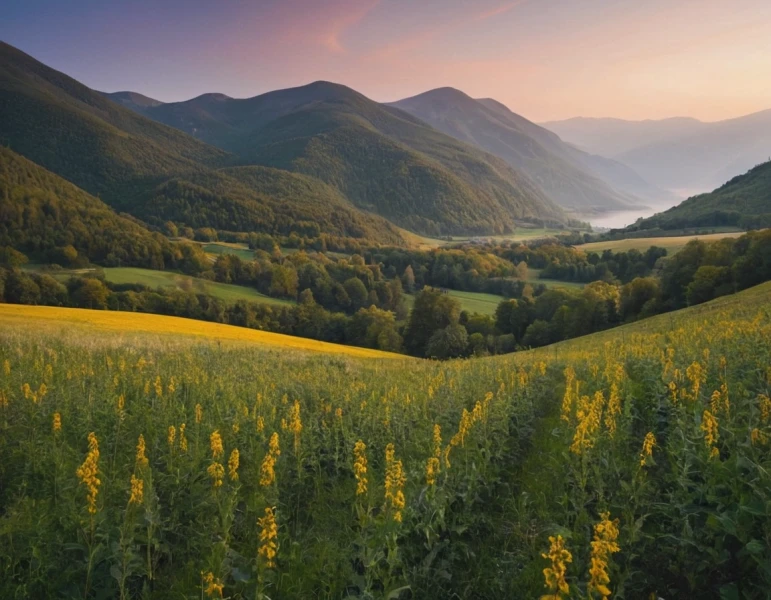Educa UNIVERSITY|ART AND ARCHITECTURE
Landscapes to Draw
Related Masters
Landscapes to Draw
Hello! I'm Ruben Aguila and I welcome you to the art of drawing landscapes.
Before I jump right into this article, I want to share something with you: I've spent years exploring landscapes through pencil, charcoal, watercolors and even digital tools. I've learned that, although drawing a landscape may seem complicated, with the right tricks and a little bit of patience, anyone can achieve breathtaking works.
Today, with my experience, I'll explain not only what are landscapes to draw, but also how to approach them, no matter if you're a beginner or advanced. Also, I'll include some tips that I would have loved to know when I started.

What are landscapes for drawing?
Scapes for drawing are graphic representations of natural or urban settings. They can include mountains, rivers, forests, cities or even imaginary worlds. They are used to express emotions, convey stories and practice artistic techniques. And the best part! They are the perfect starting point for those looking to hone their drawing skills, as they combine simple elements like geometric shapes with complex compositions that challenge your creativity.
Benefits of drawing landscapes
1. Improves your technical skills: Drawing landscapes forces you to master key concepts such as perspective, proportion and depth.
2. Relaxes you and connects you with nature: There's nothing like watching a forest or a sunset to inspire you.
3. Strengthens your creativity: Every landscape is an opportunity to experiment with colors, textures and styles.
Failproof techniques for drawing landscapes
1. Choose the right materials
The first thing is to select the tools that best suit your style.
- Pencils: Perfect for sketches and details. Opt for a range that includes hard (H) and soft (B) pencils.
- Crayons: Ideal for adding color and soft texture. Use thick paper to avoid warping.
- Digital techniques: If you prefer modern, try programs like Procreate or Photoshop.
2. Apply the rule of thirds
Divide your sheet into nine equal sections (two horizontal and two vertical lines). This will help you position important elements such as the horizon, trees or buildings, creating balance and harmony in your composition.
3. Practice atmospheric perspective
To give depth, use darker, more detailed tones in the foreground and lighter, softer colors in the background. This technique is key in mountainous or urban landscapes.
Common mistakes and how to avoid them
1. Lack of planning
Solution: Always make a preliminary sketch. This allows you to organize the elements before adding details.
2. Improper use of colors
Sometimes, beginners saturate their landscapes with too many bright colors. To avoid this, use a limited palette and balance warm and cool tones.
3. Pointless textures
Adding detail is important, but saturating a drawing with too many textures can make it heavy. Use careful brushstrokes to highlight only key areas.
Take inspiration from these types of landscapes to draw
1. Natural landscapes
These include mountains, rivers, forests and beaches. Use curved lines to convey softness and tranquility.
2. Urban landscapes
Skyscrapers, streets and squares are ideal for practicing perspective. Don't forget to include details such as shadows and lights to give realism.
3. Imaginary landscapes
Let your imagination run wild. Think fantasy worlds, galaxies or apocalyptic scenarios. There are no rules here, only creativity!
Final tips to improve your technique
- Study light and shadows. Observe how tones change depending on the time of day.
- Practice every day. Even if it takes five minutes, the important thing is consistency.
- Observe references.Go for a walk and capture landscapes with your camera or search for photos on the Internet.
- Experiment with different styles. From minimalist sketches to detailed landscapes with watercolors.
Why draw landscapes?
For me, drawing a landscape is like entering a parallel world. It is a way for me to relax and express my perception of my surroundings. Over the years, I've learned that the important thing is not that your drawing is perfect, but that it reflects a part of you. So get a pencil and create something unique.
Ready to get started? Here's your assignment: choose a landscape, either real or imaginary, and spend some time getting it down on paper. Remember, mistakes are just the beginning of something wonderful - let's draw!
See the instructions below.
Faculties
Trainings
The faculties embrace diverse academic disciplines and fields of study, opening doors to new perspectives and exploring different spheres of wisdom in a constantly evolving world.














